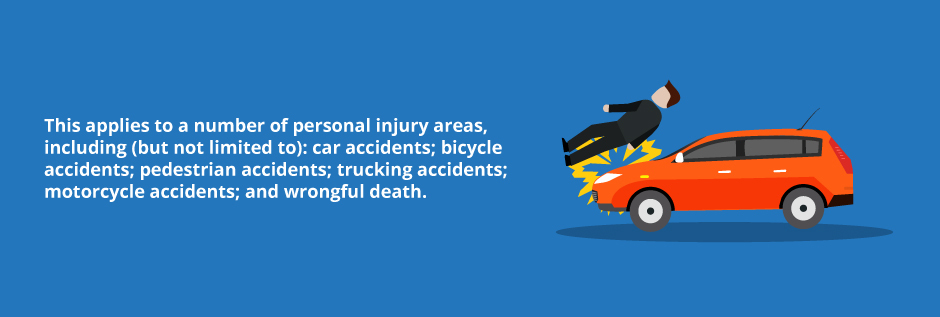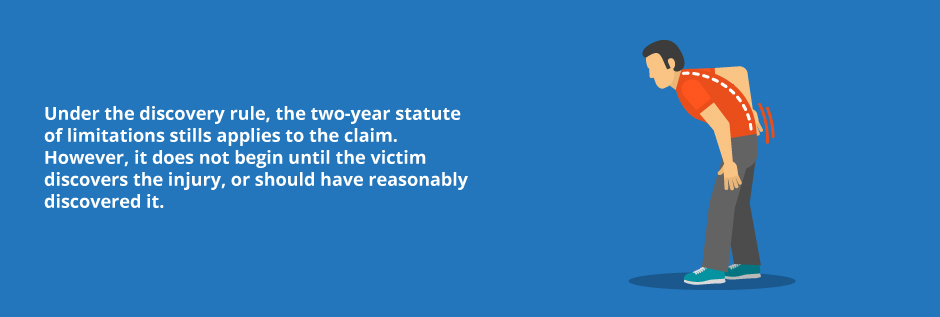
While filing a personal injury claim in Nevada, it is worth noting that there is a limited period of time during which you can sue someone. Known as the “statute of limitations” or “limitations period,” this period is generally two years after the date of an accident resulting in personal injury or after discovering your injury.
However, some type of personal injury claims have longer or shorter statute of limitations, depending on the severity of the offense and other factors, such as if your statute of limitations is “tolled,” or suspended.
At Cap & Kudler, we are committed to ensuring that our clients understand every aspect of their case in a way that makes sense. Because of this, we have compiled a list of the statute of limitations in common personal injury accidents that we have represented previously in the hopes that it provides information and insight to those considering filing a personal injury claim.
General Personal Injury Statute of Limitations

The general statute of limitations for personal injury claims is within two years after the date an accident occurred, or two years from the date that injury was discovered. This applies to a number of personal injury areas, including (but not limited to):
- Car accidents;
- Bicycle accidents;
- Pedestrian accidents;
- Trucking accidents;
- Motorcycle accidents; and
- Wrongful death (in which case, the Statute of Limitations for the Decedent’s Estate begins to run on the date of death.)
Accidents can leave victims with injuries that range from mild to debilitating. Many people are left disabled after being injured and unable to work. The most common injuries reported after these types of accidents include:
- Burns
- Crush Injuries
- Facial Lacerations
- Broken Bones
- Facial Disfigurement
- Severed Limbs
- Spinal Cord Injuries With Or Without Paralysis
Discovery Rule
In certain situations, the victim may not know that he or she has suffered an injury. In these scenarios, the discovery rule may be used to extend states that the statute of limitations to begin begins to run on the date that the injured person discovers discovered, or should have reasonably discovered, his or her injury and the potential to file a claim.

Under the discovery rule, the two-year statute of limitations stills applies to the claim. However, it does not begin until the victim discovers the injury, or should have reasonably discovered it.
Exceptions to Nevada’s Two-Year Personal Injury Statutes of Limitations
Medical Malpractice
Medical malpractice claims have their own separate rules when it cmes to the Statute of Limitations. NRS 41A.097 states that an action for Medical Malpractice must be filed within
3 years after the date of injury or 1 year after the plaintiff discovers or through the use of reasonable diligence should have discovered the injury, whichever occurs first.
So, even if an act of negligence by a doctor cannot be found within three years, the Discovery Rule will not help the injured person once the 3 years has passed.
Product Liability
Product liability claims must be filed within three years from the date of injury, or when the injury should have reasonably been discovered.
Tolling of Nevada Statutes of Limitations

The statute of limitations can also be tolled, meaning that something has stopped the statute from running for a limited period of time.
The statute of limitations is usually tolled when the victim is a minor under the age of 18 or is found to be mentally incompetent by the court. Under Nevada’s personal injury laws, tolling will apply in the following situations:
In all personal injury cases except those involving medical malpractice, if the victim was a minor when they suffered their injury, the statute of limitations will not begin until they turn 18 years old.
In medical malpractice cases involving minors, parents are typically responsible for filing a personal injury case within the statute of limitations on behalf of their child – failure to do so will prevent the child from filing once she becomes an adult. In cases involving brain damage or birth defects, a lawsuit may be filed at any time before the victim’s 10th birthday. If a minor’s injury causes sterility, a lawsuit must be filed within two years of the date the injury is found.
Contact an Experienced Las Vegas Personal Injury Attorney

Failing to bring forward your personal injury claim within the statute of limitations means that you may have little to no chance of receiving compensation for your injuries. For this reason, it is critical to retain an experienced personal injury attorney as soon as your injury is discovered in order to file a claim as soon as possible. This maximizes the probability of receiving compensation from the party responsible for your injuries.
At Cap & Kudler, we are here to work with you—and for you—throughout each step of the personal injury claim process. For more information or to discuss a potential claim with an experienced personal injury attorney, contact us today to schedule a free consultation.
